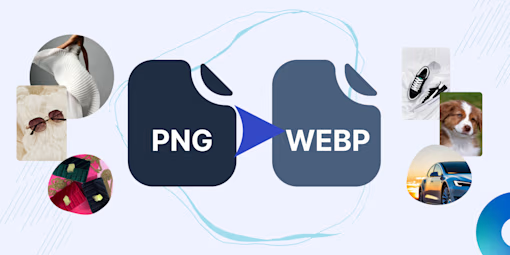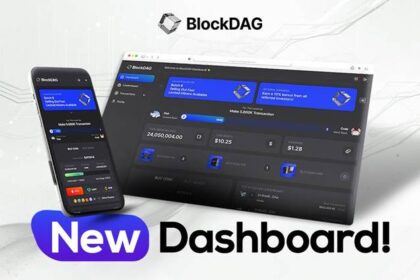In today’s digital world, where the performance of websites and applications plays a crucial role in user engagement and retention, optimizing images is more important than ever. One effective way to achieve this is by converting PNG images to WEBP format. This article will guide programmers through the benefits of converting PNG to WEBP, discuss the process in detail, and explore how to automate this conversion to streamline workflows and enhance efficiency.
Understanding the Need for Image Optimization
Images are a fundamental part of web content, significantly impacting load times and overall performance. Optimizing images is essential for:
- Reducing Load Times: Smaller image files load faster, improving the user experience and reducing bounce rates.
- Saving Bandwidth: Optimized images consume less bandwidth, which is particularly important for mobile users with limited data plans.
- Improving SEO: Faster-loading websites rank higher in search engine results, increasing visibility and traffic.
Why Convert PNG to WEBP?
1. Enhanced Compression
WEBP, developed by Google, offers superior compression capabilities compared to PNG. It supports both lossless and lossy compression, allowing for significant file size reductions without compromising image quality. This makes WEBP an excellent choice for web developers aiming to optimize their sites.
2. Faster Load Times
By converting PNG images to WEBP, websites can benefit from faster load times due to the reduced file sizes. This is particularly important for mobile users, who may experience slower load times on their devices.
3. Versatility
WEBP supports transparency (like PNG) and animation (like GIF), making it a versatile format suitable for various types of images, including logos, icons, and animated graphics.
Converting PNG to WEBP for Programmers
For programmers, converting PNG to WEBP involves several considerations and steps to ensure efficient and effective image optimization.
Assessing Image Quality Needs
Before converting images, it’s essential to determine the quality requirements of the project. Lossless compression is ideal for images that need to retain all original details, while lossy compression can be used for images where some quality loss is acceptable in exchange for smaller file sizes.
Automating the Conversion Process
Automation is key to handling image conversions efficiently, especially when dealing with large volumes of images. Here’s how programmers can automate the PNG to WEBP conversion process:
Leveraging Image Management Platforms
Platforms like Cloudinary simplify image management and optimization. Cloudinary, founded in 2012, has grown into a leading media experience platform used by over 2,000,000 developers and nearly 10,000 brands. Its robust features make it an excellent tool for automating image conversions.
Setting Up Automated Workflows
- Define Conversion Parameters: Establish the parameters for converting PNG to WEBP, such as the desired compression type (lossless or lossy) and any additional transformations (resizing, cropping, etc.).
- Integrate with CI/CD Pipelines: Incorporate the conversion process into continuous integration and continuous deployment (CI/CD) pipelines to ensure that all new images are automatically converted and optimized during the build and deployment stages.
- Use APIs and SDKs: Utilize Cloudinary’s APIs and SDKs to automate the conversion process. This allows for seamless integration into existing development workflows, ensuring that image optimization is consistently applied across all projects.
Benefits of Automated Image Conversion
Consistency and Efficiency
Automating the conversion process ensures that all images are consistently optimized according to predefined parameters. This reduces the risk of human error and ensures that all images meet the same quality and performance standards.
Time Savings
Automation saves significant time, allowing developers to focus on other critical aspects of their projects. Instead of manually converting each image, the automated system handles the workload, increasing overall productivity.
Error Reduction
Manual conversion processes are prone to errors, such as inconsistent quality settings or missing images. Automation minimizes these risks, ensuring that all images are correctly optimized and converted.
Practical Applications of PNG to WEBP Conversion
E-Commerce Platforms
E-commerce websites often feature numerous high-quality images to showcase products. By converting these images from PNG to WEBP, e-commerce platforms can reduce file sizes and enhance load times, providing a smoother shopping experience for users and increasing conversion rates.
Content-Heavy Websites
Blogs, news sites, and portfolio websites with extensive media content benefit greatly from image optimization. Converting PNG to WEBP ensures that these sites can handle large volumes of images without compromising performance, resulting in faster page loads and better user engagement.
Mobile Applications
Mobile apps frequently encounter challenges related to limited bandwidth and slower internet connections. Optimizing images by converting PNG to WEBP helps reduce data usage and improve app performance, making it a critical strategy for mobile app developers.
Best Practices for Programmers
To maximize the benefits of converting PNG to WEBP, programmers should follow these best practices:
Evaluate Image Quality Requirements
Assess the specific quality requirements for each project and choose the appropriate type of compression. Use lossless compression for images that require high fidelity and lossy compression for those where some quality loss is acceptable.
Automate Conversion Processes
Leverage tools and platforms like Cloudinary to automate the conversion process. Automation ensures consistency, saves time, and reduces the risk of errors.
Optimize for Different Devices
Ensure that WEBP images are optimized for different devices and screen sizes. Use responsive design techniques and Cloudinary’s transformation capabilities to deliver the best possible experience across all platforms.
Monitor Performance
Regularly monitor the performance of optimized images using analytics tools. Track metrics such as page load times, user engagement, and bandwidth usage to ensure that your optimization strategies are effective.
Cloudinary’s Role in Image Optimization
Cloudinary plays a crucial role in simplifying and automating the PNG to WEBP conversion process. Here are some key features and benefits:
Simplified Conversion
Cloudinary’s platform allows for easy conversion of PNG images to WEBP through its intuitive user interface and powerful APIs. Programmers can quickly upload images, apply the necessary transformations, and generate optimized WEBP files.
Advanced Transformation Capabilities
Beyond basic conversion, Cloudinary offers advanced transformation options, such as resizing, cropping, and adjusting image quality. These capabilities ensure that the final WEBP images are perfectly suited to their intended use cases.
Automatic Format Selection
Cloudinary’s intelligent platform can automatically select the best format for each image based on the user’s browser capabilities. This ensures that users always receive the most optimized version of the image, further enhancing performance and user experience.
Seamless Integration
Cloudinary integrates seamlessly with popular development frameworks and content management systems (CMS), making it easy to incorporate PNG to WEBP conversion into existing workflows. Whether using WordPress, Shopify, or custom-built applications, Cloudinary’s plugins and SDKs facilitate smooth integration.
Real-World Success Stories
E-Commerce Enhancement
An e-commerce site struggling with slow load times and high bounce rates decided to optimize its images by converting PNG to WEBP using Cloudinary. The result was a significant reduction in image file sizes, leading to faster page loads and improved user experience. This optimization led to a 20% increase in conversion rates and higher search engine rankings.
Media-Rich Blog Optimization
A blog featuring numerous high-quality images faced performance challenges. By leveraging Cloudinary’s PNG to WEBP conversion and transformation capabilities, the blog optimized its images without compromising quality. This optimization resulted in a 30% decrease in page load times and a more engaging user experience, increasing readership and social media shares.
Mobile App Performance Boost
A mobile app featuring a large number of PNG images was experiencing slow load times and high data usage. The development team integrated Cloudinary to convert PNG images to WEBP and apply appropriate transformations. The outcome was a 40% reduction in image file sizes, significantly improving app performance and reducing data consumption for users.
Conclusion
Converting PNG to WEBP is a powerful strategy for optimizing web images, improving performance, and enhancing user experience. For programmers, automating this conversion process can streamline workflows, ensure consistency, and save valuable time. By leveraging tools like Cloudinary and adhering to best practices, programmers can effectively optimize images, improve website and application performance, and deliver a superior user experience. As web technologies continue to evolve, staying ahead with efficient image management practices is key to success in the digital landscape.








